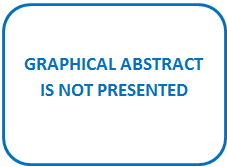Principles and stages of creation of automatic control systems with a model of complex technological processes
DOI:
https://doi.org/10.15587/1729-4061.2022.270519Keywords:
control system, control with model, information-logical scheme, combined mathematical model, algorithm, optimizationAbstract
The object of this study is an effective approach to designing automatic control systems with a model of complex technological processes, which include interrelated and complementary stages from the formulation of the task to the implementation of the control system at the facility. It includes a set of measures, starting with the analysis of the process in its hardware design with the construction of an information and logical scheme to the development of all types of security and commissioning.
The main problem in the implementation of a control system with a technological process model is the limited ranges of adequacy of mathematical models. Therefore, when changing the load on the unit, changing external and internal perturbations, it is necessary to constantly ensure the necessary level of adequacy of the models. It is proposed to use a combined model as a mathematical model of the control object, combining the advantages of analytical and experimental-statistical models. This makes it possible to significantly expand the information base of the resulting model. A simple and effective iterative algorithm for calculating this model is also proposed. It includes sequential steps to determine the parameters of the model by basic dependences (the deterministic part of the model), followed by clarifying them according to the current data from the object (experimental statistical part of the model). The effectiveness of the approach is confirmed by the example of ASC TP of the ammonia synthesis column. By improving the accuracy of determining the control parameters and narrowing the range of their change around the optimal value, the volume of ammonia release increases by 5–8 %.
The application of the described approach on the example of the development of an automatic control system for the technological process of ammonia synthesis confirmed the economic feasibility of implementing the proposed solutions
References
- Zhu, H., Li, R., Shao, H. (2004). Control for integrating processes based on new modified smith predictor. University of Bath.
- Hrabovetskyi, B. Ye. (2010). Metody ekspertnykh otsinok: teoriya, metodolohiya, napriamky vykorystannia. Vinnytsia: VNTU, 171.
- Mamat, R., Fleming, P. J. (1995). Method for on-line identification of a first order plus dead-time process model. Electronics Letters, 31 (15), 1297–1298. doi: https://doi.org/10.1049/el:19950865
- ISA-106: Using Procedural Automation to Improve Operational Efficiency. Wastewater and Automatic Controls Symposium. Available at: https://isawaterwastewater.com/wp-content/uploads/2013/08/WWAC2013_Tennant-Myers_procedural-automation-ISA106_slides_1up.pdf
- Verhaegen, M., Verdult, V. (2007). Filtering and System Identification: A Least Squares Approach. Cambridge University Press. doi: https://doi.org/10.1017/cbo9780511618888
- Soderstrom, T., Stoica, P. (2002). Instrumental variable methods for system identification. Circuits, Systems, and Signal Processing, 21 (1), 1–9. doi: https://doi.org/10.1007/bf01211647
- Liu, T., Gao, F. (2012). Industrial Process Identification and Control Design. Step-Test and Relay-Experiment-Based Methods. Springer-Verlag London Limited, 474. doi: https://doi.org/10.1007/978-0-85729-977-2
- Loriia, M. (2019). Experimental investigations of the method of determination of optimal controller settings. EUREKA: Physics and Engineering, 2, 16–22. doi: https://doi.org/10.21303/2461-4262.2019.00864
- Ananiev, M. V., Tselishchev, O. B., Loriia, M. H., Yelisieiev, P. Y. (2012). Identyfikatsiya parametriv modeli z vykorystanniam tochok hlobalnykh ekstremumiv dynamichnykh kharakterystyk. Voprosy himii i himicheskoy tekhnologi, 5, 188–191.
- Abdalhamid, D., Loria, M. G., Eliseev, P. I., Tselischev, A. B. (2014). Development of combined model for optimization. Science & Technique, 3, 56–60. Available at: https://sat.bntu.by/jour/article/view/64?locale=ru_RU

Downloads
Published
How to Cite
Issue
Section
License
Copyright (c) 2022 Maryna Loriia, Oleksii Tselishchev, Peter Eliseyev, Olga Porkuian, Oleksandr Hurin, Alla Abramova, Sergii Boichenko

This work is licensed under a Creative Commons Attribution 4.0 International License.
The consolidation and conditions for the transfer of copyright (identification of authorship) is carried out in the License Agreement. In particular, the authors reserve the right to the authorship of their manuscript and transfer the first publication of this work to the journal under the terms of the Creative Commons CC BY license. At the same time, they have the right to conclude on their own additional agreements concerning the non-exclusive distribution of the work in the form in which it was published by this journal, but provided that the link to the first publication of the article in this journal is preserved.
A license agreement is a document in which the author warrants that he/she owns all copyright for the work (manuscript, article, etc.).
The authors, signing the License Agreement with TECHNOLOGY CENTER PC, have all rights to the further use of their work, provided that they link to our edition in which the work was published.
According to the terms of the License Agreement, the Publisher TECHNOLOGY CENTER PC does not take away your copyrights and receives permission from the authors to use and dissemination of the publication through the world's scientific resources (own electronic resources, scientometric databases, repositories, libraries, etc.).
In the absence of a signed License Agreement or in the absence of this agreement of identifiers allowing to identify the identity of the author, the editors have no right to work with the manuscript.
It is important to remember that there is another type of agreement between authors and publishers – when copyright is transferred from the authors to the publisher. In this case, the authors lose ownership of their work and may not use it in any way.









